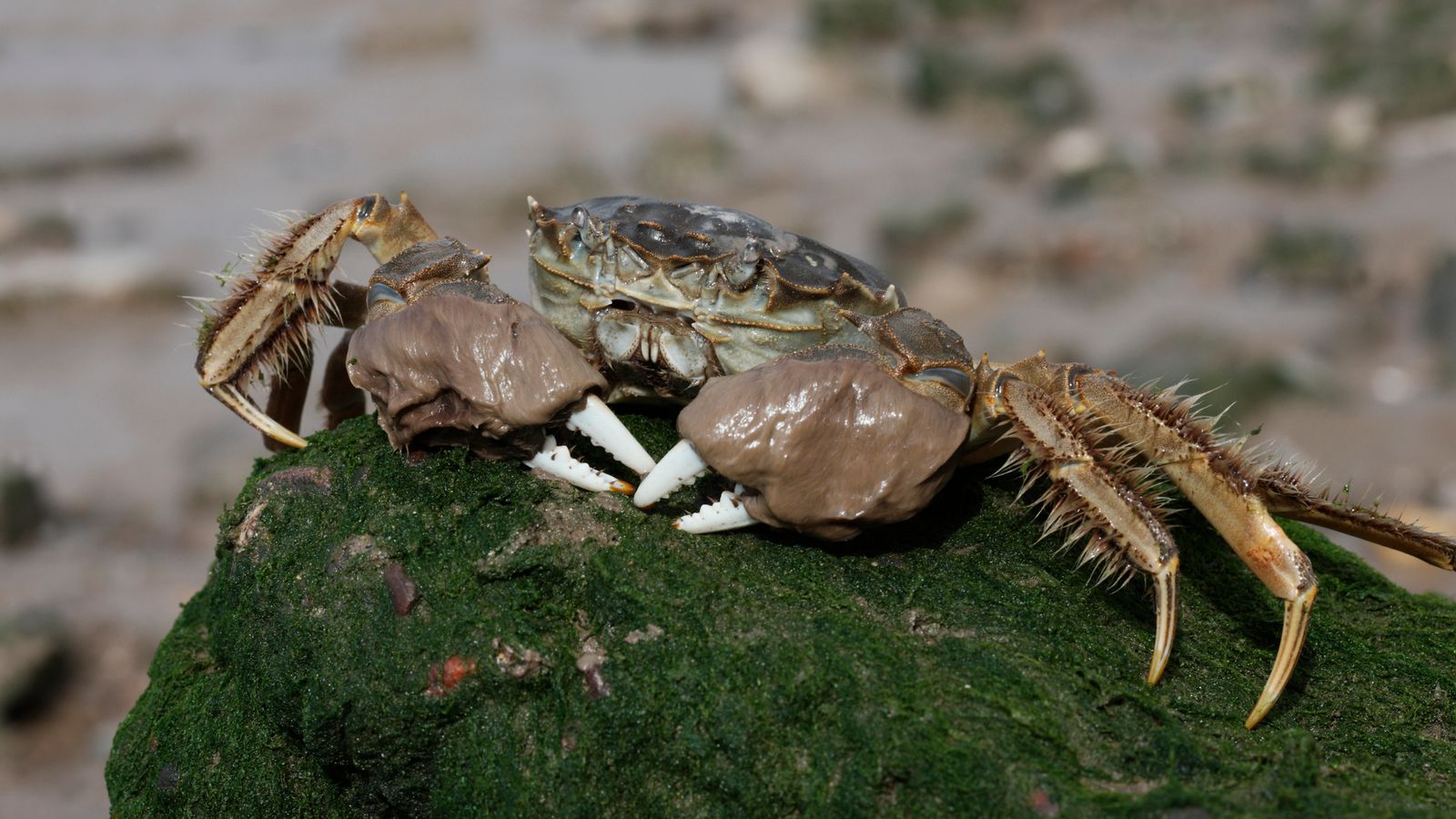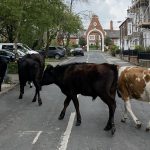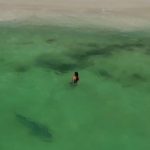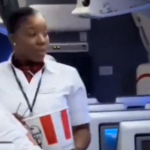The first ever Chinese mitten crab trap has been installed in the UK, in a bid to control the highly invasive species.
The crabs – named after their furry claws – are among the 100 worst invasive species according to the Natural History Museum (NHM), with one expert saying they are eating the UK’s native fauna “out of house and home”.
Conservationists have constructed and installed the UK’s first trap for them at Pode Hole in Lincolnshire to catch the predators as they migrate downstream to mate.
The village lies at the confluence of several drainage channels and was reported as having a particular problem with the crabs.
NHM’s Paul Clark says the first UK mitten crab was recorded at Lotts Road Power Station, which used to generate electricity for the London Underground.
They are thought to have travelled from eastern China to Europe in sediment on the bottom of ships’ ballast tanks, either as very small crabs or larvae.
“Between 1985 and 1990 the population suddenly exploded,” said Dr Clark, with “millions” now living in the Thames and surrounding waterways.
Alaska Fat Bear Week: Dominant and defensive mother Grazer crowned champion in annual contest
Urban beavers reintroduced to London after 400 years
Pet loss and grief: ‘My world crashed’ – The rising number of people seeking support over the deaths of their animals
Dr Clark, who studies the invasive species, said: “It has spread rapidly since I first picked up this crab in 1976 – I never knew this was going to be the start of a long-term love affair.”
But it is not an affectionate “love affair” – the objective of Dr Clark’s work, alongside researching the creatures, is to try to control their population growth.
Female mitten crabs can carry anywhere between 500,000 and a million eggs at one time.
He added: “There are millions – I don’t know how many there are – but they are eating us out of house and home.
“Our native food is being depleted, and our biodiversity is going down.”
A ten-inch dinner plate
Mitten crabs can grow to the size of a ten-inch dinner plate, damage fishing gear with their sharp claws, and eat native species. Research has found they eat salmon and trout eggs – species that are already under threat in the wild.
Dr Clark described seeing a crab eating a snail.
“It treated it like an ice cream cone. It nipped off the apex and then pulled the flesh out of the shell and just ate it,” he said.
A group of conservationists from the Welland and Deepings Internal Drainage Board, Lincolnshire Wildlife Trust, Sheffield University, and the Natural History Museum have constructed a “letterbox-like” trap to try to catch some of the crabs.
Although none have been caught yet in the £8,000 contraption, any that are will be placed in a deep freeze before they are dissected.
“What we are looking to do is study the contents of their digestive system,” added Dr Clark.
“We are hoping that we might be able to identify what they have been eating using DNA.”
Please use Chrome browser for a more accessible video player
The full extent of the crabs in English and Welsh waters is unknown, so the public are also being asked to report sightings of the crustacean to the Mitten Crab Watch.
This can be done via the Natural History Museum website.






















